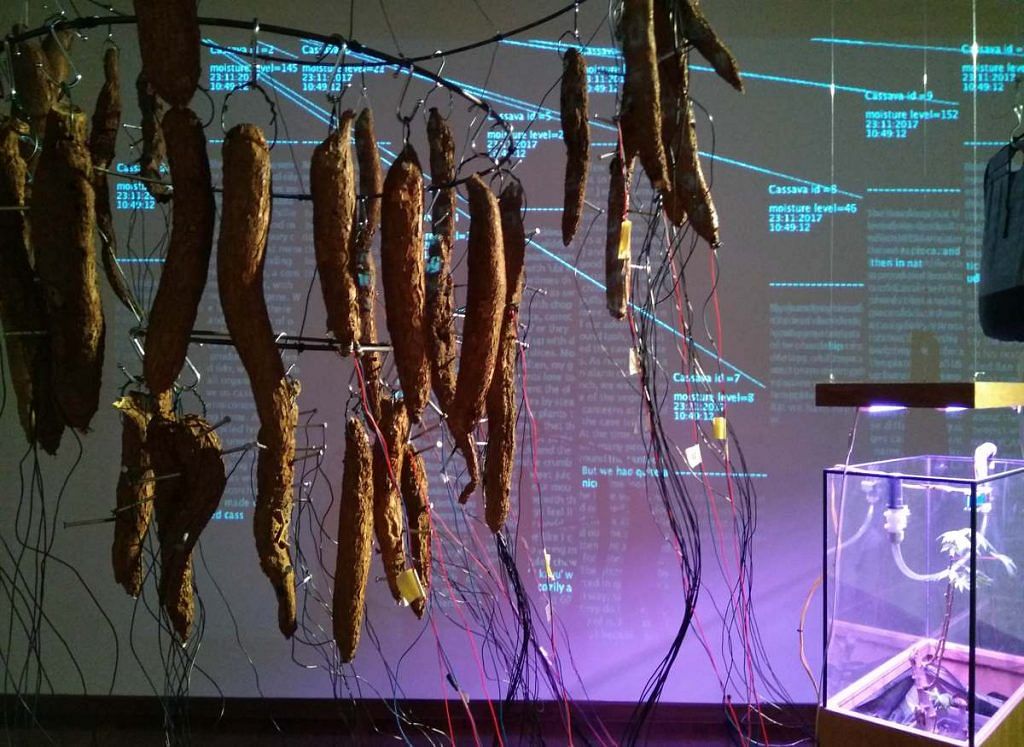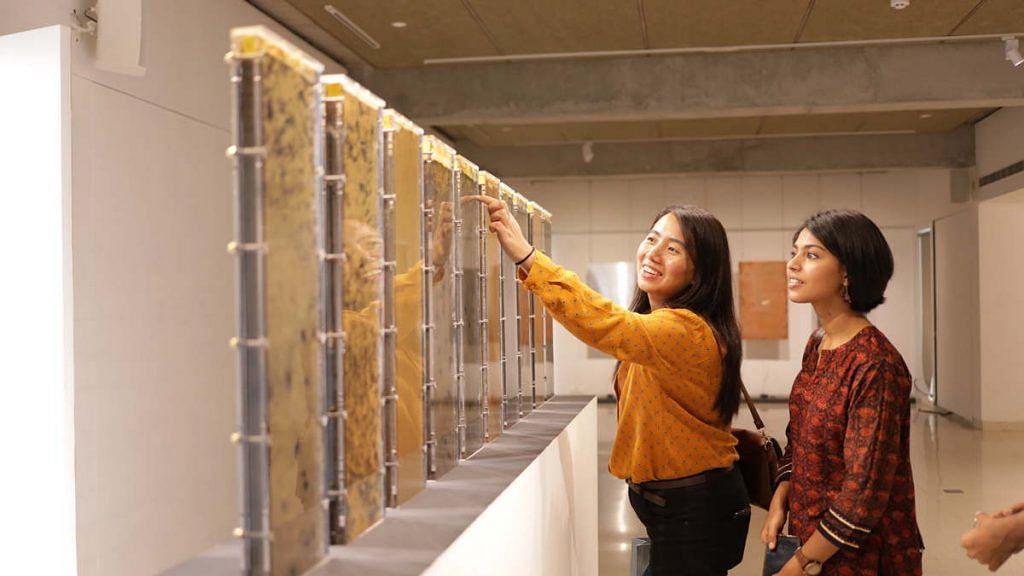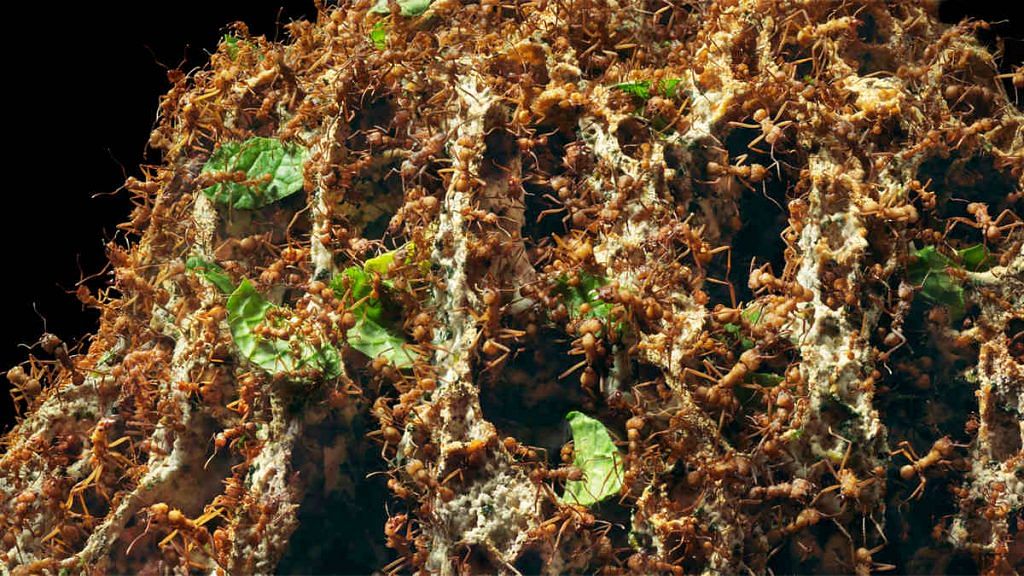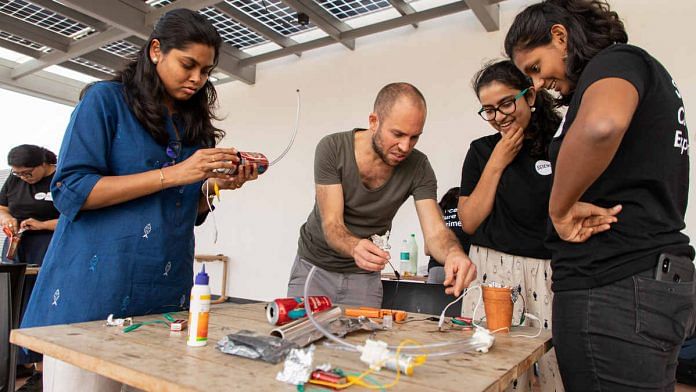Bengaluru: Dehydrated stones that make music — ‘rock’, perhaps — when submerged in water, cassava tubers that ‘interact’ with human beings, a colony of ants demonstrating a lesson about antibiotics, photographs as a by-product of photosynthesis. Many of the exhibits defy expectations at Science Gallery Bengaluru, a rare space where scientists and artists come together to showcase science in new and engrossing ways.
The Global Science Gallery Network, an initiative that started in Dublin’s Trinity College in 2008, now has centres in seven cities across the world, but Bengaluru is different from its counterparts. While universities operate the other centres, enterprising individuals from diverse backgrounds run Bengaluru Science Gallery as a non-profit, with funding from the Karnataka government.
“Science Gallery is a different type of beast,” said science historian Jahnavi Phalkey, who officially set up the Bengaluru centre in January 2018 after having previously worked with the Deutsches Museum (of science and technology) in Munich, and the Science Museum in London in various capacities.
“The challenge is what got me here, that of establishing a new kind of public space interpreted for India and to rethink what a public place for science today in the country means,” she added.

Without the dedicated backing of an academic institution, it hasn’t always been easy to get international scientists and artists together, but over the past four-and-a-half years, the centre has successively hosted several immersive and interactive exhibits, lectures, workshops, masterclasses, and events involving music, films, and food. It’s all designed to make visitors not just look, but think.
Themes explored so far — through hands-on experiments, science-based art installations, virtual tours, and film — have included the brain and the complexities of thinking, a mind-bending take on the lives of plants, a deep dive into the mysteries of water, a fresh look at the periodic table elements, and a multidisciplinary investigation of “contagion”— of not just diseases, but emotions and behaviour.
“In India, the problem is that higher education is in silos where experts from different fields work separately,” Phalkey told ThePrint. “Therefore, for the context of India, the first thing I decided was that my work would not just be around natural sciences, but also human and social sciences.”
Another goal is to encourage people to become more engaged with science and to foster a “science culture” by encouraging visitors to interact with experimental spaces and instruments, Phalkey added. “The minute you say science belongs in everyday life and you want people to relate to it daily, you realise the outcome really is culture.”
Also Read: Offering access to high-end gizmos, these spaces in Bengaluru are helping startups make in India
Past exhibitions and future plans
Two of the five exhibitions so far have been in physical spaces (before Covid), and participants and speakers have included interdisciplinary experts and entertainers.
The first exhibition, titled ‘Elements’, was held in October 2019, in partnership with the UK’s Royal Society for Chemistry and the Jawaharlal Nehru Centre for Advanced Scientific Research (JNCASR) in Bengaluru. In addition to an interactive exhibition, which used crowd-sourced everyday items to represent the elements in a 3D periodic table, it featured a true-to-theme musical performance, experiments with food, and film screenings.

The second and larger physical exhibition, ‘Submerge’, from 15 December 2019 to 30 January 2020, sought to showcase water in a fresh light. Aimed at young adults, it included events like music from dehydrated rocks in water tanks, movie screenings and interactions with filmmakers, and workshops ranging from learning how to turn street puddles into fountains, to creating clouds in a lab, to writing science fiction involving water on Mars.
The next three exhibitions were virtual owing to the pandemic.
‘Phytopia’, in August 2020, dealt with subjects like photosynthesis, fractal patterns in plant structures, botanical art, and indigenous food. ‘Contagion’, which ran from 30 April to 31 December 2021, explored the plagues in British India, clinical history in art, misinformation, and modern medicine. ‘Psyche’, held from 1 April to 15 May this year, trained the lens on reality distortion, schizophrenia, stem cell research, music and rhythm, and more.
The gallery has run other initiatives as well.
“In June this year, we hosted the CARBON summer school, a four week-long stay programme for 20 young adults from across India with a grant from the Indian Institute for Human Settlements (IIHS),” said Madhushree Kamak, programme manager at the gallery.
The programme was focused on understanding carbon and global heating from various perspectives and involved interacting with experts from various backgrounds, field and community visits, and learning under subject mentors.

The Science Gallery’s next exhibition is expected to take place at the end of the year, and will likely be held in its first dedicated facility — an upcoming new public lab complex near Mekhri Circle.
Plans are now afoot to expand the scope of the exhibitions and events. The physical centre will involve several experimental spaces and instruments to interact with.
“We expect there to be a lot of community engagement,” Neha Arora, the gallery’s development manager, said. “That is possible because we’ll have a space for various activities, groups, and different types of engagements.”
Phalkey said the team also plans to focus on “citizen science” — getting members of the public more involved in science and discovery.
How well the gallery works to increase “science culture” and even STEM (science, technology, engineering, maths) enrolment would be interesting to observe, Phalkey says, pointing to trends observed at Trinity College.
According to her, five years after the Science Gallery in Dublin opened, the number of STEM enrolments went up in Trinity College; admission forms pointed to data that a significant number of candidates had visited the centre.
“We don’t want people to come, look at an exhibition, and leave. The objective is to create works that make people think. We want people to feel the depth of what was presented,” Phalkey said.
Part of a network, but Bengaluru Science Gallery is different
Science Gallery was conceptualised in Trinity College Dublin in 2005 by experimental physicist Michael Coey (no longer associated), as a public outreach facility for the institute. The primary objectives were to address the declining number of STEM enrollees in Trinity, and to tap into the wealth of talent that visits The Complex in Dublin, the famous live arts centre. With an intent to marry science and art, the first Science Gallery was set up in Dublin in 2008.
In 2012, after receiving financial support from Google, Science Gallery International was established, aiming to install eight other centres globally. King’s College London was the second to sign up, followed immediately by Bengaluru, and then University of Melbourne. There have been eight such galleries around the world, including in Atlanta, Detroit, Rotterdam, Berlin, and Venice (now closed).
Working with such a wide variety of people from various backgrounds and bringing them together is uniquely rewarding, Kamak and Arora both said. “It’s a very nice melting pot of disciplines and backgrounds, with people from different parts of the country who have all come together with a common interest,” Kamak said.
She was the first employee to join the gallery, and Arora was the next. ”We had fun at the exhibitions with stuff like Edible Elements (a food-based event), cultural performances, and music. It was really unexpected for people, and a good challenge to follow through after our first exhibition.”
The team grew after the first exhibition, and the next one was even bigger, Kamak added.
But with the pandemic came a steep learning curve, Arora said. “We suddenly had to figure out what format would work best digitally, and now again we plan to go back to physical exhibitions,” she elaborated. “So the expectations are very high on what we are able to deliver on both.”
Unlike other centres in the Global Science Gallery Network, the Bengaluru arm is set up as an independent non-profit, funded by the Government of Karnataka, rather than being affiliated to an individual institution.
”A lot of our energy is spent in fundraising and administrative work, and Science Gallery Bengaluru’s vision is broader than that of the other galleries, which are closer to being the public engagement arm of the university they are a part of,” explained Arora, who is involved with fundraising.
The gallery has, however, partnered with three institutions — the Indian Institute of Science (IISc), the National Centre for Biological Sciences (NCBS), and the Srishti Institute of Art, Design and Technology. The gallery’s staff of 19 work out of the NCBS campus currently.
Science Gallery Bengaluru’s new building is expected to be opened partially by the end of the year and completely by early 2023.
(Edited by Asavari Singh)
Also Read: Covid to space & missiles, these women scientists are rocking Indian science and how



